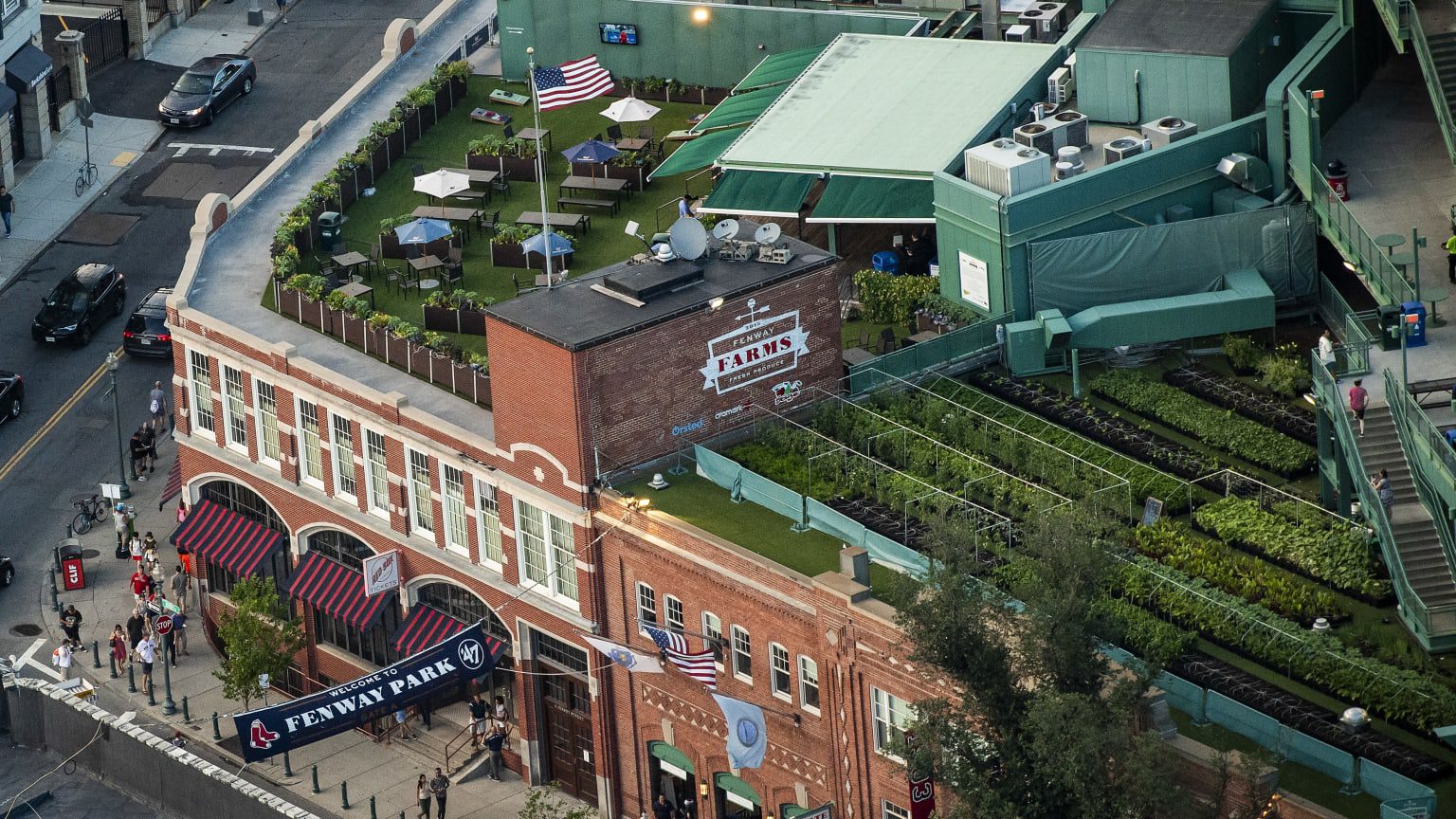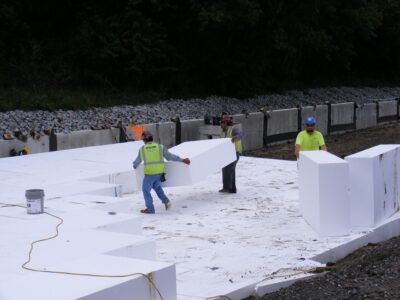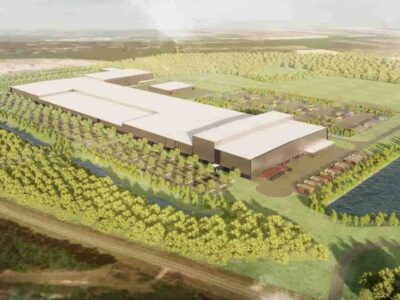“As I grew up, I knew that as a building (Fenway Park) was on the level of Mount Olympus, the Pyramid at Giza, the nation’s capitol, the czar’s Winter Palace, and the Louvre — except, of course, that is better than all those inconsequential places.”
Baseball Commissioner Bart Giamatti
Baseball is America’s pastime. And, nowhere is that pastime cherished more than in Boston’s Fenway Park, home of the Red Sox. Not only is Fenway Park Major League Baseball’s oldest active stadium, and it is also home to one of the most unique architectural features in a baseball stadium, the iconic Green Monster, the park’s strikingly tall left-field wall.
The Green Monster, however, isn’t Fenway’s only significant “green” feature. The Boston Red Sox’s historic stadium is an innovator with its Fenway Farm, a 5,000 sq. ft. rooftop garden that provides fresh, organic produce for the stadium’s restaurants, concession stands, and even clubhouse meals.
In 2014, Linda Pizzuti Henry, a Red Sox co-owner, and wife of the team’s principal owner John Henry, had a vision for a rooftop garden at Fenway. As the stadium’s Facilities and Greening Initiatives Coordinator Robyn Pacini recently told mlb.com’s Matt Monagan: “She noticed that we were underutilizing a roof in the ballpark and had this great idea to turn it into a farm.”
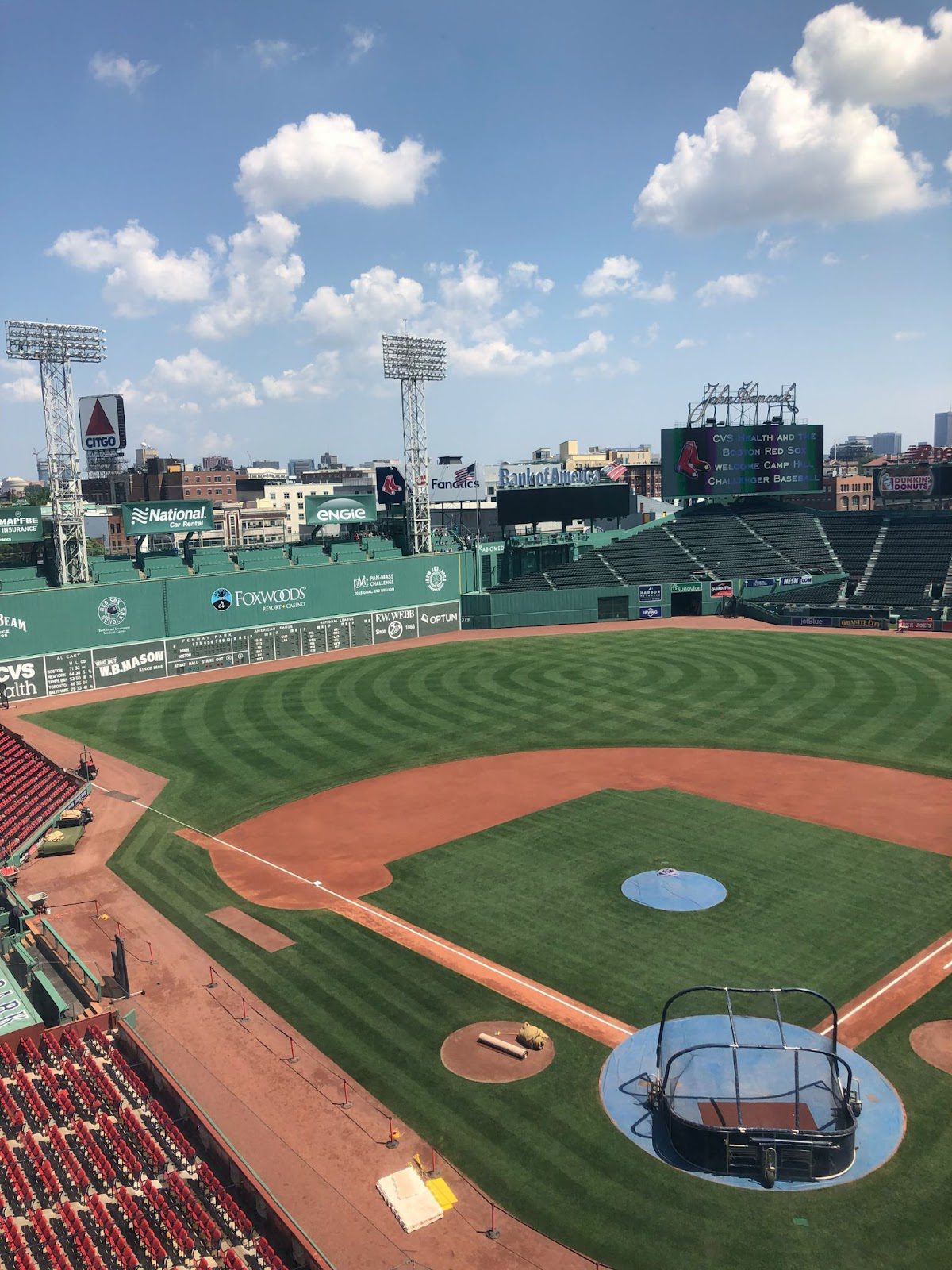
As with any successful team, a key is assembling talented players. To make the rooftop garden a reality, the Boston Red Sox partnered with three local companies: Recover Green Roofs, Green City Growers, and the Boston office of the Simpson Gumpertz & Heger (SGH) engineering firm.
Fenway Farms’ design can be described as a milk crate farm. More than 2,000 lightweight milk crates and small boxes help to maximize the garden’s 5,000 sq. ft. space. “The milk crate system was chosen because it is very mobile and modular, like Legos,” explains Jessie Banhazl, CEO & Founder of Green City Growers. Recover Green Roofs devised 5-gallon non-woven fabric-lined crates (made of 50 percent recycled plastic content) to optimize drainage and aeration, while also providing strong root development and plant growth. SGH, meanwhile, contributed ideas to prevent wind pressure problems with the milk crate planters. From concept to completion, the project was completed in eight months, with the installation taking only about one month and costing only an estimated $200,000.
Located on a rooftop above the team’s offices, the farm can be seen from various spots in the stadium and fans can visit it during games. An estimated half-million people check out Fenway Farms in a typical season. It’s also become a highlight on the Fenway Park Tour. Its success helped inspire the Red Sox to create the Vineyard Vines Event Deck, an event venue with an additional 600 sq. ft. of growing space. In recognition of their work, Green City Growers received Walden Woods Project’s Environmental Challenge Award and Recover Green Roofs earned the Intensive Institutional Award of Excellence in 2017.
As managers of the Farm, Green City Growers work in collaboration with Fenway’s Executive Chef Ron Abell and his team. Crops are chosen annually. Spring selections have included carrots, broccoli rabe, strawberries, and snap peas, while cucumbers, tomatoes, collards, and sweet potatoes are popular summer crops. New England’s growing season generally is March-October, and, as Jessie Banhazl noted in igrownew.com, “baseball season happens to align perfectly with (that).”
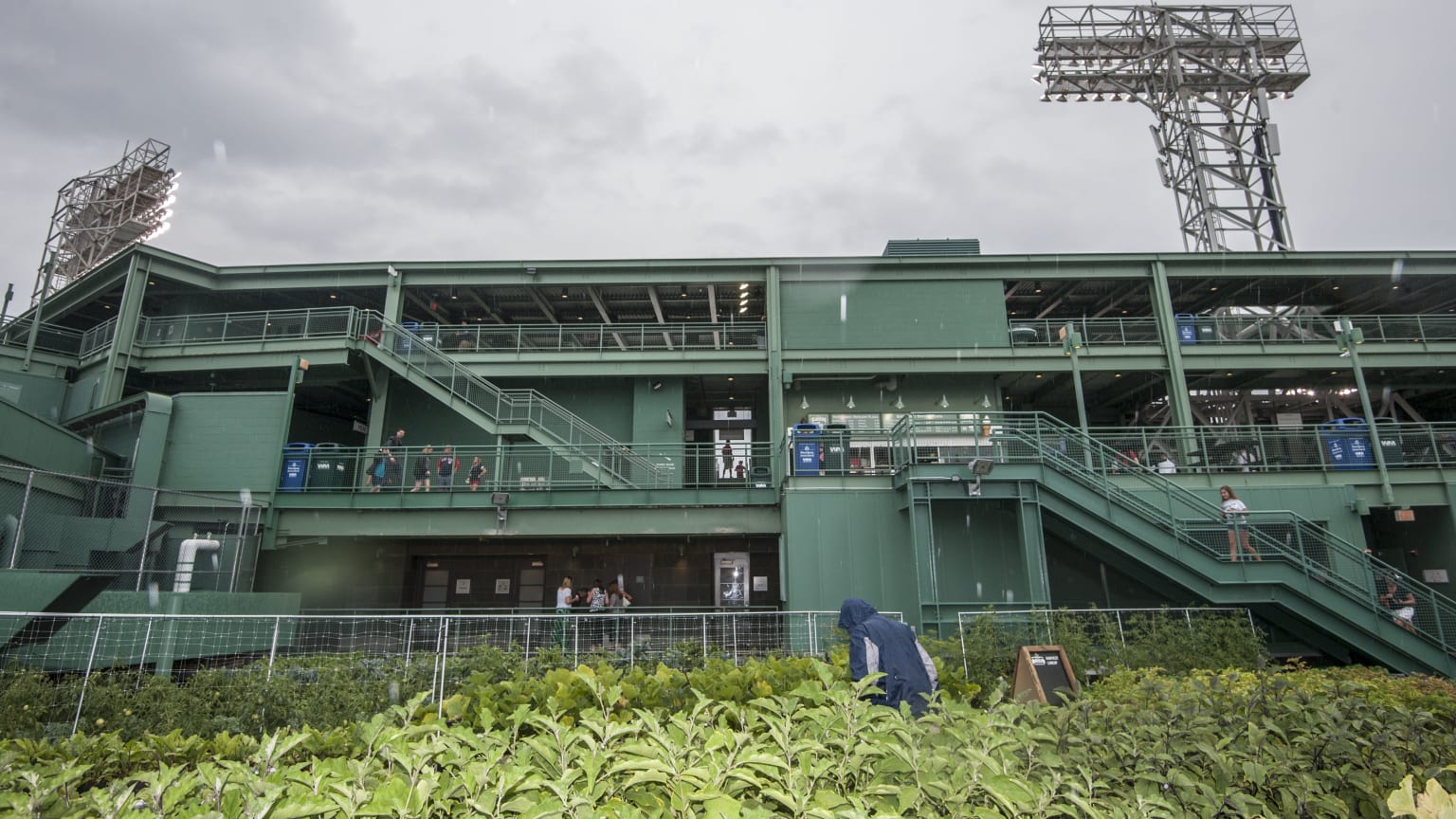
The farm typically harvests over 6,000 pounds of organic vegetables, fruits, and herbs – all grown in specially-chosen, locally sourced Vermont Compost Company soil – to use in Fenway’s food and beverages. “It just seems like people are coming to the ballpark and they want to be healthy and they want to eat healthy,” Abell told NBC News. The fresh supply of organic produce like Swiss chard, kale, and French breakfast radishes have allowed Abell to get creative and come up with dishes such as root vegetable hash and scallion pancakes.
Fenway Farms is a long way from the park’s last gardening experiment. During the 2000 season, then-bullpen coach John Cumberland grew tomato plants and basil in the bullpen hoping to generate good luck in breaking “The Curse of the Bambino” and making the Red Sox World Series winners for the first time since 1918 (the team did win the 2004 World Series). While Fenway Farms wasn’t created with superstitions in mind, the Red Sox won their division 2016-18 and the 2018 World Series (so maybe?).
Red Sox management, however, has said they were more concerned about environmental and wellness issues in creating Fenway Farms than superstitions. With the freshly grown crops used in the stadium food, fans become more aware of healthier food choices. “We’re hoping to teach fans and younger folks about the importance of sustainability and healthy living, and Fenway Farms is a tool for that education,” explains Chris Knight, Fenway’s manager of facilities and planning.
To reduce food waste, the culinary team has discovered ways to utilize otherwise discarded items like carrots tops (which are used in pesto) and beet greens (which are used in salads). Green tomatoes and cucumbers are pickled while chiles are put into hot sauces. “What we harvest here can make its way around to almost anywhere in the ballpark,” Abell said.
At the end of the baseball season, any leftover harvest gets donated to local Boston food banks. Last year during the pandemic, the entire crop was dispersed to those in need. Additionally, everything harvested in the Vineyard’s garden gets donated annually to a New England food rescue organization. The Red Sox, moreover, are considering doing full circle composting in the garden. “We’re always continuously looking at different projects,” as Robyn Pacini recently told mlb.com.
Fenway Farms’ innovative design provides numerous environmental benefits. Because it acts as an insulator, the farm lowers heating and cooling needs to the building underneath it. Its smart drip irrigation system, which can be monitored offsite, cuts down on water use. Furthermore, rooftop gardens, like the Farms, lessens the Urban Heat Island Effect by conserving energy through improved thermal performance as well as reducing air pollution through carbon dioxide absorption. By catching and retaining rainwater into its soil, the farm also decreases wasteful stormwater runoff.
Linda Pizzuti Henry, the woman who thought up this fantastic farm idea, summed it up perfectly when she stated on Instagram: “We have added a garden of true delight, and we are all the richer for it.”

